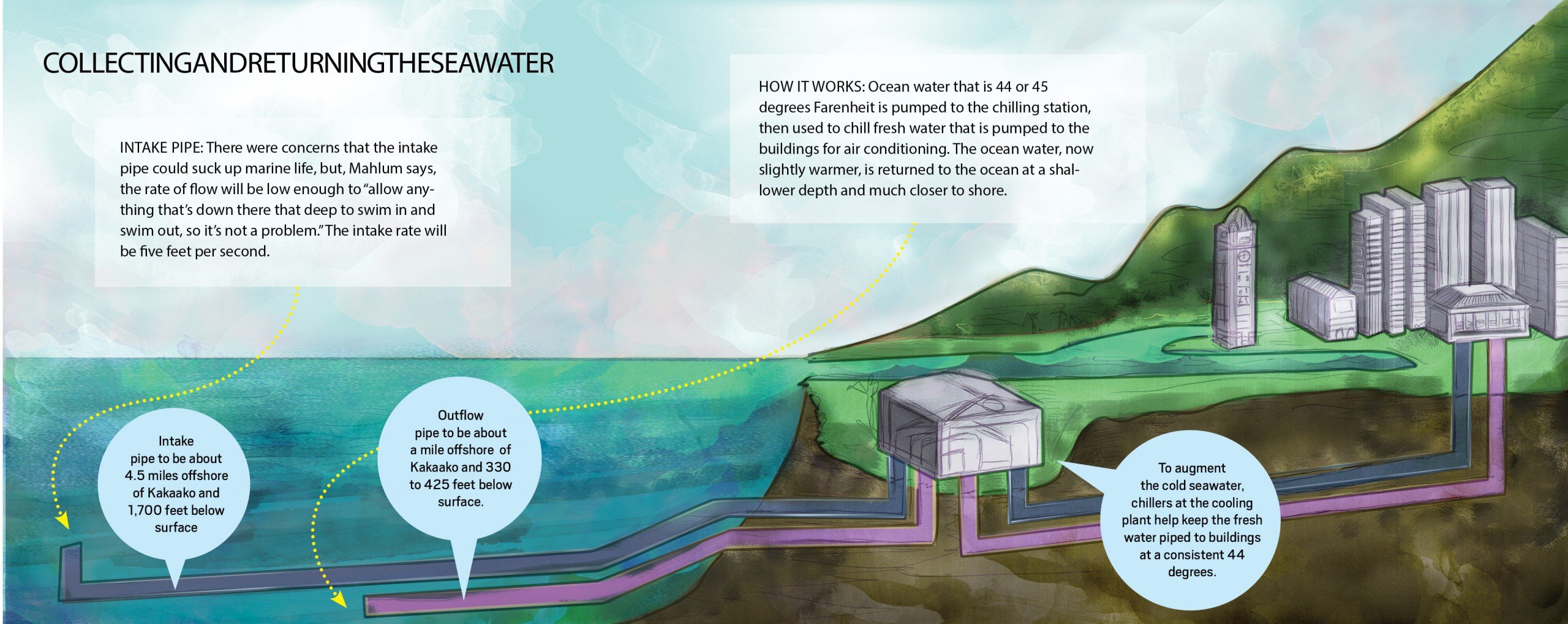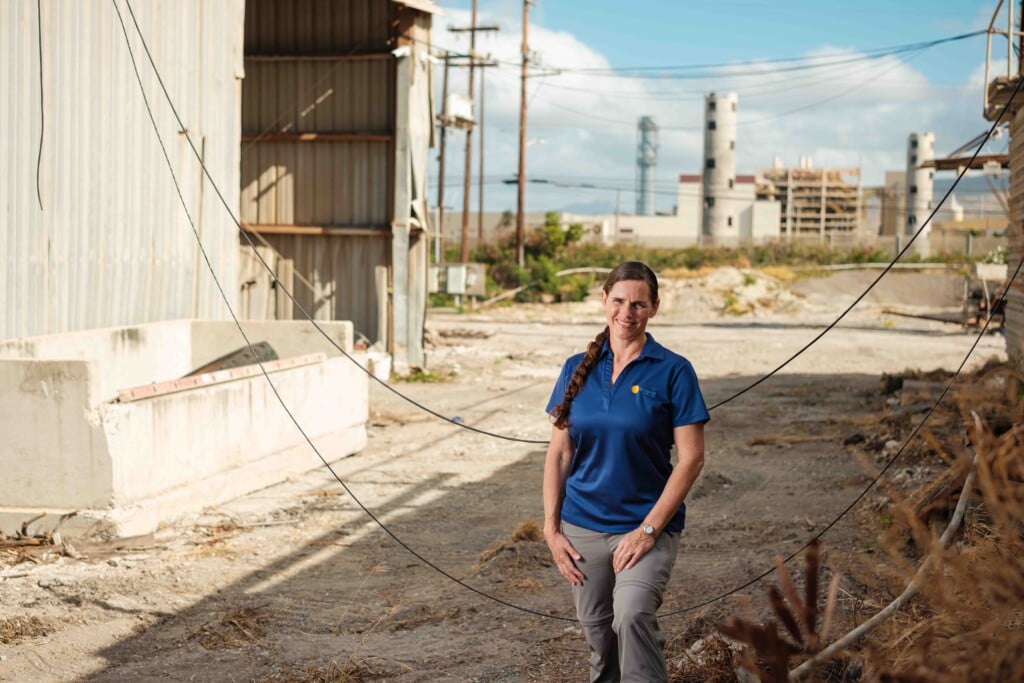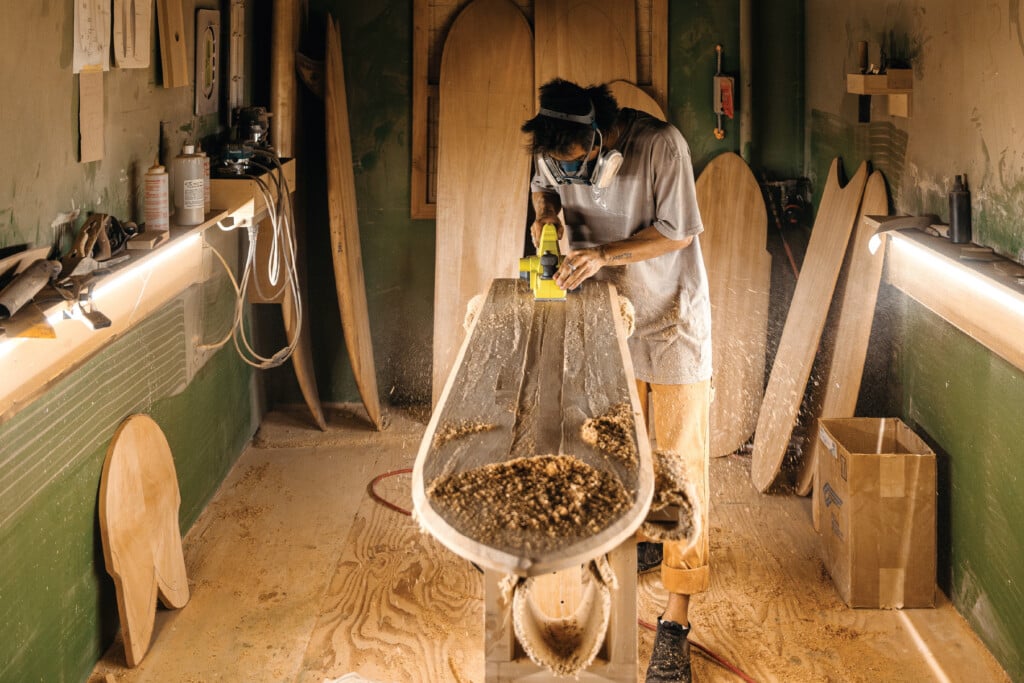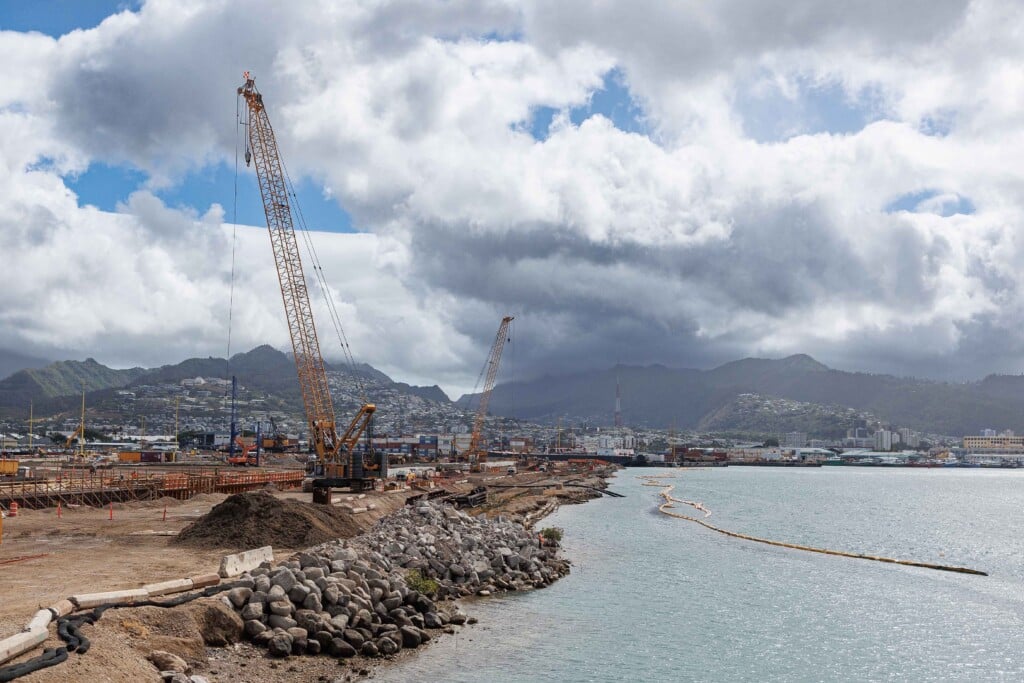Inside the Honolulu Seawater Air Conditioning project
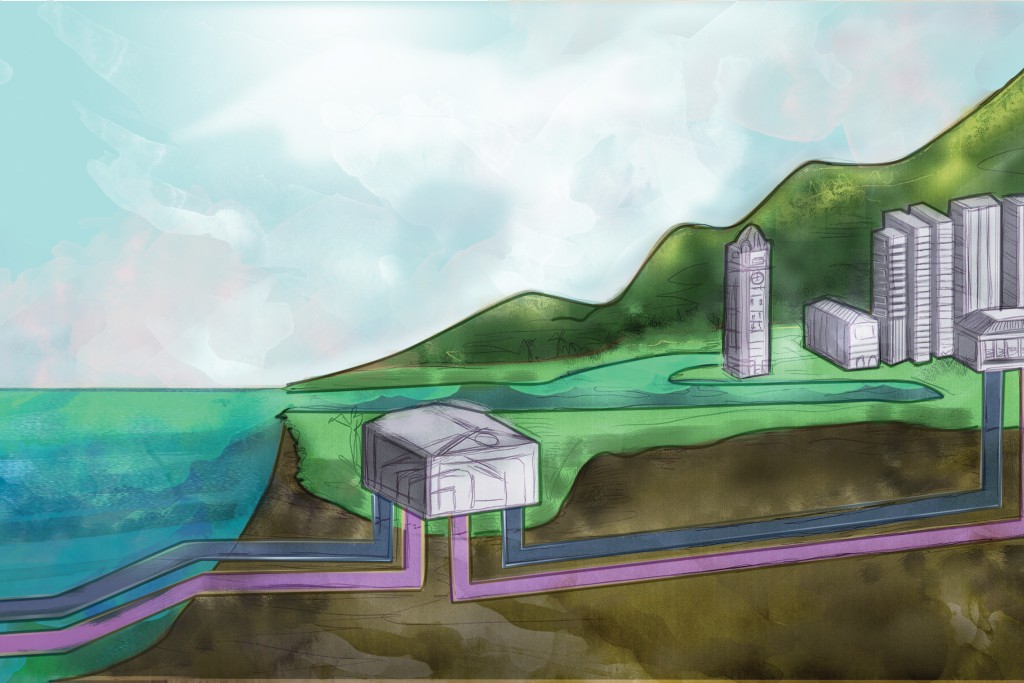
SOURCES: HSWAC AND HAWAII BUSINESS RESEARCH
Honolulu Seawater Air Conditioning is scheduled to break ground this year on its cooling system for buildings in downtown Honolulu, says the vice chairman of HSWAC’s board, Bill Mahlum. Here’s a look at the system:
1/3
Air conditioning consumes one-third of the energy used in typical Hawaii office buildings.
Financing
$145 million in tax-exempt revenue bonds, authorized by the state Legislature
$113 million in taxable revenue bonds
$47.8 million in private equity
At full capacity, the system will offset the burning of 178,000 barrels of oil a year by reducing electricity consumption by 77 million kilowatt hours.
2004: Plans first announced, with an initial target date for completion of 2009.
2007: Initial construction targeted to start.
Second half of 2012: New scheduled start after construction delayed by permitting issues and the recession.
2014: Revised date for system to begin operations.
Early Clients
1 First Hawaiian Bank
2 Hawaiian Electric Co.
3 One Waterfront Towers
4 Finance Factors
Negotiations with government and private landowners and leaseholders are proceeding and more than 70 percent of capacity has been reserved, HSWAC says.
Where the Pipes Will Be Laid
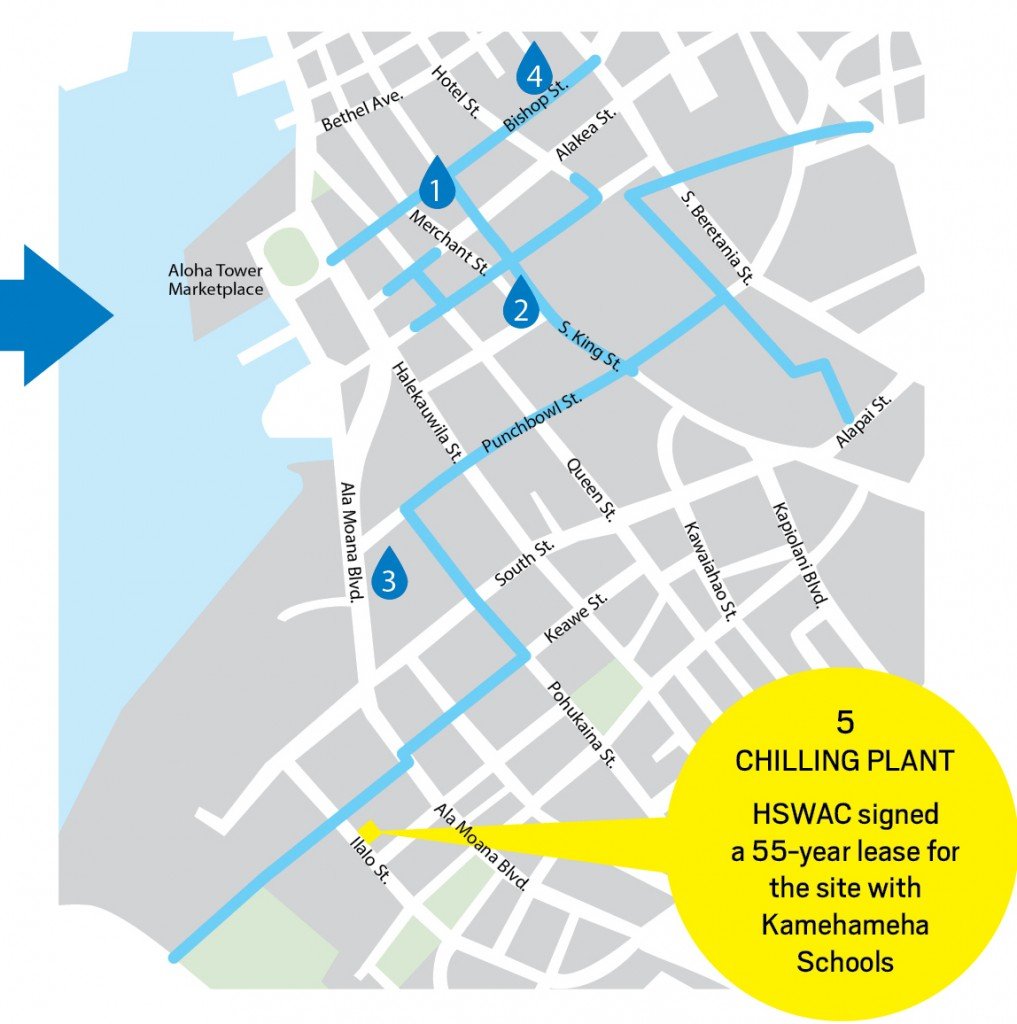 Underground pipes carry the chilled freshwater to buildings throughout downtown Honolulu.
Underground pipes carry the chilled freshwater to buildings throughout downtown Honolulu.
Existing Systems
Seawater and deep lake water are already used for cooling in cities worldwide: Toronto, Ithaca, N.Y. (at Cornell University since 2000), Amsterdam, Stockholm and several other Swedish cities. Two members of HSWAC’s management team, Anders Rydaker and Ingvar Larsson, helped develop the Swedish systems.
Seawater AC is also used at the Natural Energy Laboratory of Hawaii Authority in Kona. The system was installed in 1987 and continues to be expanded. It now supplies three buildings totaling 67,200 cubic feet.
Annual Water Savings
Seawater air conditioning will save 260 million gallons of potable water that is used in conventional AC every year. Traditional AC systems also create more sewage discharge and greenhouse gases, and use more chemicals to treat their water than seawater AC, HSWAC says.
Source: DBEDT report to the 2009 Hawaii Legislature
Main Contractors
HSWAC says the project will generate more than $200 million in construction spending. Here are the main contractors and engineers:
Construction Management: Joint venture of Kiewit and Mortenson construction companies
Cooling station: dck Pacific (InSynergy Engineering as the engineer)
Micro-tunneling: To be determined (Yogi Kwan Engineering as the engineer)
Seawater piping: Healy Tibbitts (Makai Ocean Engineering as the engineer)
Distribution: To be determined (R.M. Towill as the engineer)
Plus many other contractors
Cost to Customer
HSWAC will save its customers money on their air conditioning, Mahlum says. “All customers as a group save money. Some save a lot of money, some save less, some won’t see benefits until the second year, but they all save money.” Contracts last 25 years with long-term, stable rates designed to grow at less than the rate of inflation.
Supporters
Hawaiian Electric Co. was one of HSWAC’s first clients.
says Peter Rosegg, HECO’s senior spokesman. “We’re committed to reducing our use of electricity in the Islands and, by doing that, also reducing the use of imported oil.”
Blue Planet Foundation, an environmental nonprofit, says it is excited to see the project move forward.
says Blue Planet executive director Jeff Mikulina.
Future
HSWAC says it is planning a second seawater cooling system in Waikiki. The company is currently in talks with potential Waikiki customers, and says there is a high level of interest.
